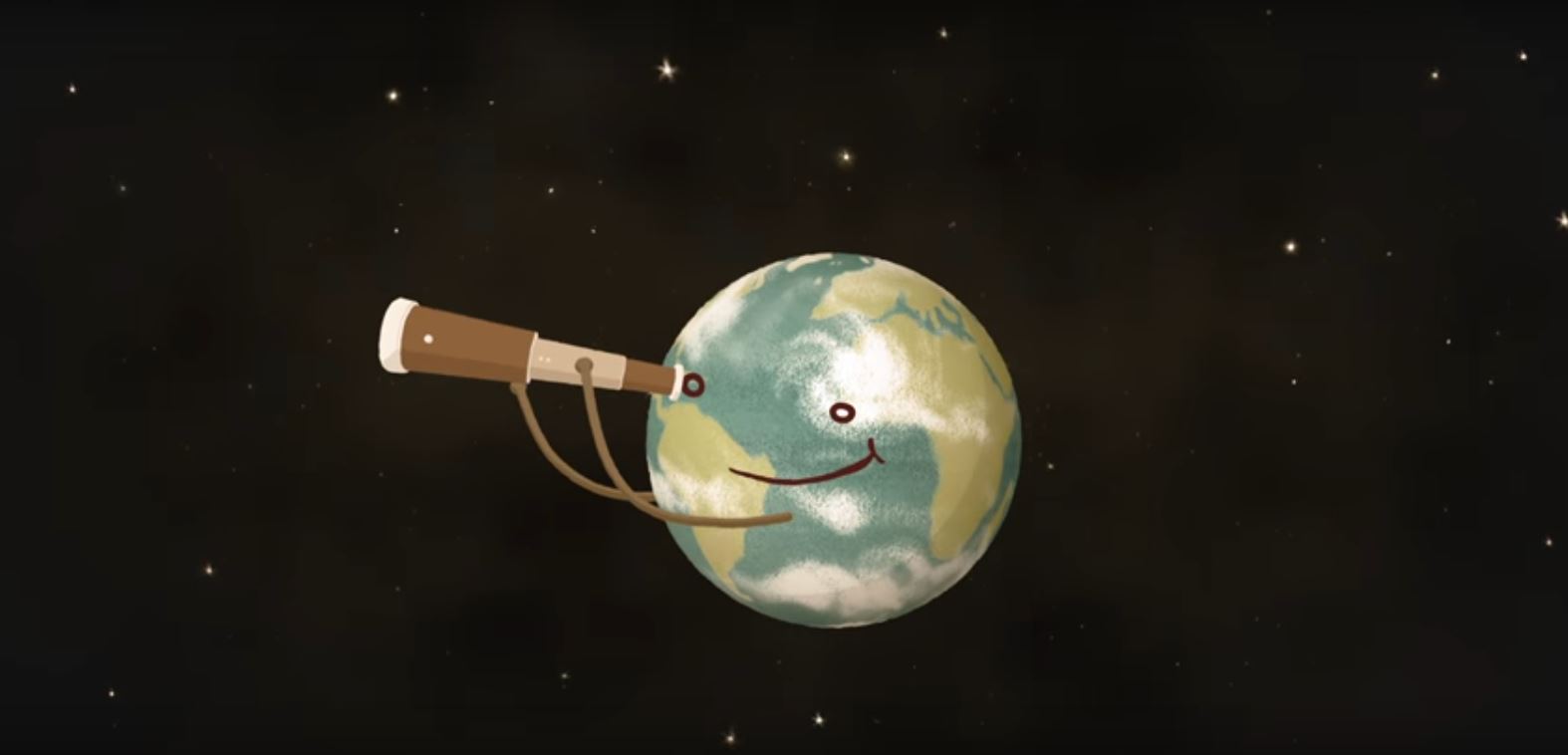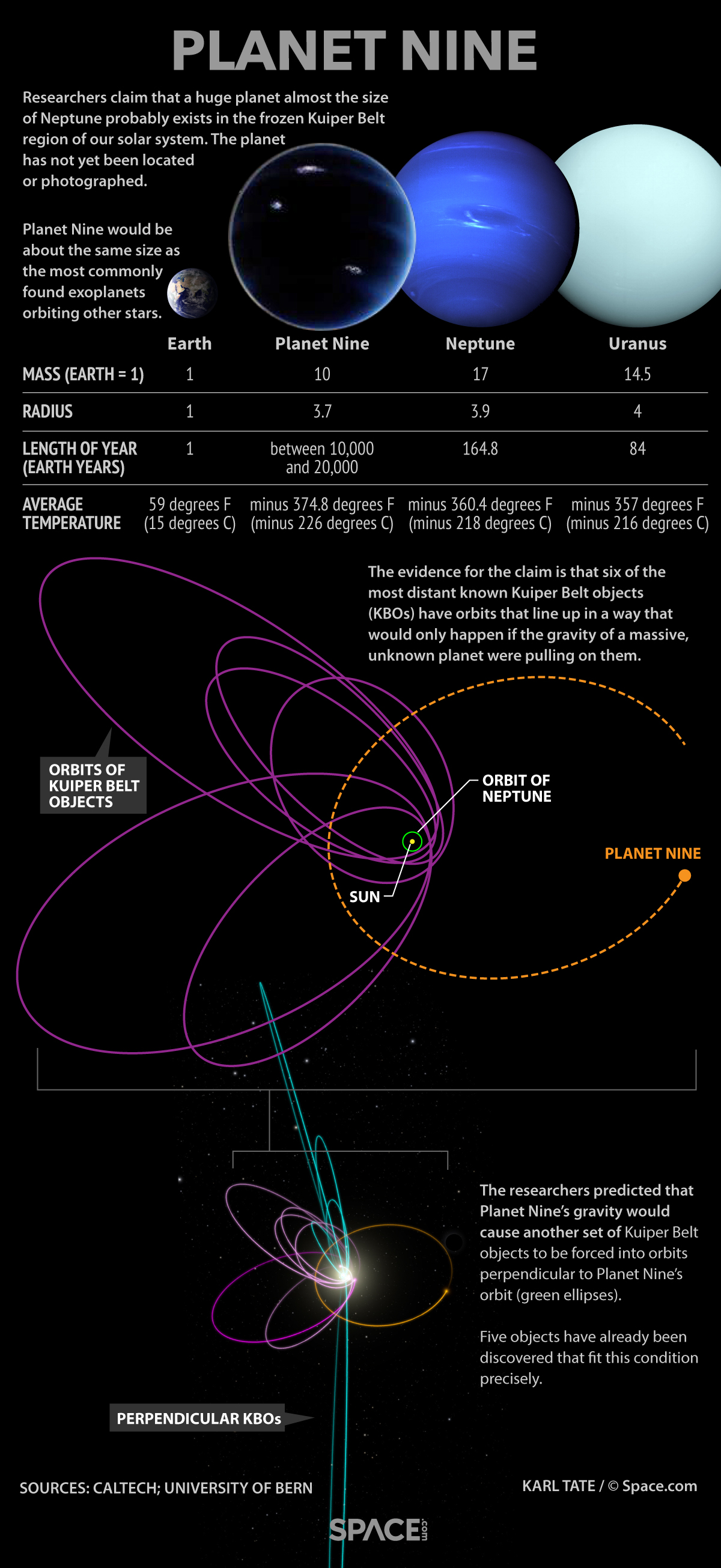Think You Can Find Planet 9? Check Out This Citizen-Science Project

Think you can find Planet 9? A new citizen-science project lets participants search for hidden solar system objects beyond the orbit of Neptune, where a possible ninth planet may lie.
The Zooniverse website enlists the public's help in performing scientific research. For example, the Planet Hunters project looked for signs of alien planets transiting their parent stars. The Zooniverse projects now span a wide range of topics, from space to literature.
The newest entry in the Zooniverse space-projects list is called Backyard Worlds: Find Planet 9. You can learn more about the project at Zooniverse's Backyard Worlds website here.
For this project, participants are asked to look through data collected by NASA's Wide-field Infrared Survey Explorer (WISE) and help to separate real objects from system artifacts that can look like real objects (false positives). Citizen scientists will look for spots of light that move across the sky, signaling that those points of light are objects relatively close to Earth compared to the background stars. [The Evidence for 'Planet Nine' in Images (Gallery)]
Like all of the Zooniverse projects, Backyard Worlds is asking citizen scientists to do a job that can't be done by a computer.
"While it's possible to process the data to find moving points of light, we can't get rid of all the noise," according to the Zooniverse website. "Spiky images of stars, especially variable stars, are everywhere. Worse, are the optical ghosts, blurry blobs of light that have been scattered around inside WISE's instruments. These can hop back and forth, or even change color. These artifacts can easily fool our image processing software.
"But with your powerful human eyes, you can help us recognize real objects of interest that move among these artifacts," the description reads. "You'll be able to tell what objects are real by the way they move around differently from the artifacts."
Breaking space news, the latest updates on rocket launches, skywatching events and more!
The website compares the method used in Backyard Worlds to the approach taken by Clyde Tombaugh, who discovered Pluto in 1930. Tombaugh used photographic plates and a device called a blink comparator to look for moving objects in the night sky.
Beyond the orbit of Neptune lies a belt of cold, icy objects called the Kuiper Belt; beyond that is a sphere of similar objects called the Oort Cloud. There are a few dwarf planets in addition to Pluto that lie in this region. Between Neptune and the nearest star to the sun, Proxima Centauri, there may be a planet about the size of Neptune, according to some recent predictions by a group of scientists at the California Institute of Technology. The research team also says the object is very likely visible with modern telescopes and could be discovered in the next year.
"There are just over four light-years between Neptune and Proxima Centauri, the nearest star, and much of this vast territory is unexplored," Marc Kuchner, an astrophysicist at NASA's Goddard Space Flight Center in Greenbelt, Maryland, said in a statement from NASA.
"Because there's so little sunlight, even large objects in that region barely shine in visible light," Kuchner said. But WISE searches for infrared light, which can be emitted by objects that are too cool to emit visible light. (Even human bodies radiate infrared light.)
The WISE mission scanned the entire sky in 2009 and 2010, uncovering distant galaxies, black holes and objects called brown dwarfs, which are larger than Jupiter but smaller than dwarf stars. There may be a hidden population of brown dwarfs in the region just outside the solar system, according to the Zooniverse website. The WISE spacecraft was also used to search for near-Earth asteroids.
"Backyard Worlds: Planet 9 has the potential to unlock once-in-a-century discoveries, and it's exciting to think they could be spotted first by a citizen scientist," Aaron Meisner, a postdoctoral researcher at the University of California, Berkeley, who specializes in analyzing WISE images, said in the statement.
Backyard Worlds: Planet 9 is a collaboration among NASA, UC Berkeley, the American Museum of Natural History in New York, Arizona State University, the Space Telescope Science Institute in Baltimore, and Zooniverse, according to the statement from NASA.
Follow Calla Cofield @callacofield. Follow us @Spacedotcom, Facebook and Google+. Original article on Space.com.

Calla Cofield joined Space.com's crew in October 2014. She enjoys writing about black holes, exploding stars, ripples in space-time, science in comic books, and all the mysteries of the cosmos. Prior to joining Space.com Calla worked as a freelance writer, with her work appearing in APS News, Symmetry magazine, Scientific American, Nature News, Physics World, and others. From 2010 to 2014 she was a producer for The Physics Central Podcast. Previously, Calla worked at the American Museum of Natural History in New York City (hands down the best office building ever) and SLAC National Accelerator Laboratory in California. Calla studied physics at the University of Massachusetts, Amherst and is originally from Sandy, Utah. In 2018, Calla left Space.com to join NASA's Jet Propulsion Laboratory media team where she oversees astronomy, physics, exoplanets and the Cold Atom Lab mission. She has been underground at three of the largest particle accelerators in the world and would really like to know what the heck dark matter is. Contact Calla via: E-Mail – Twitter


